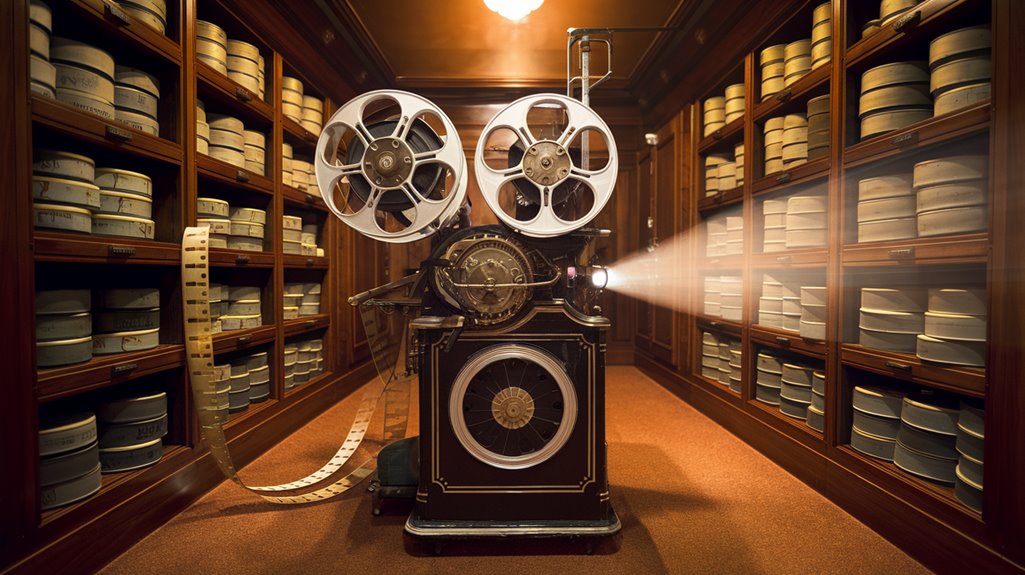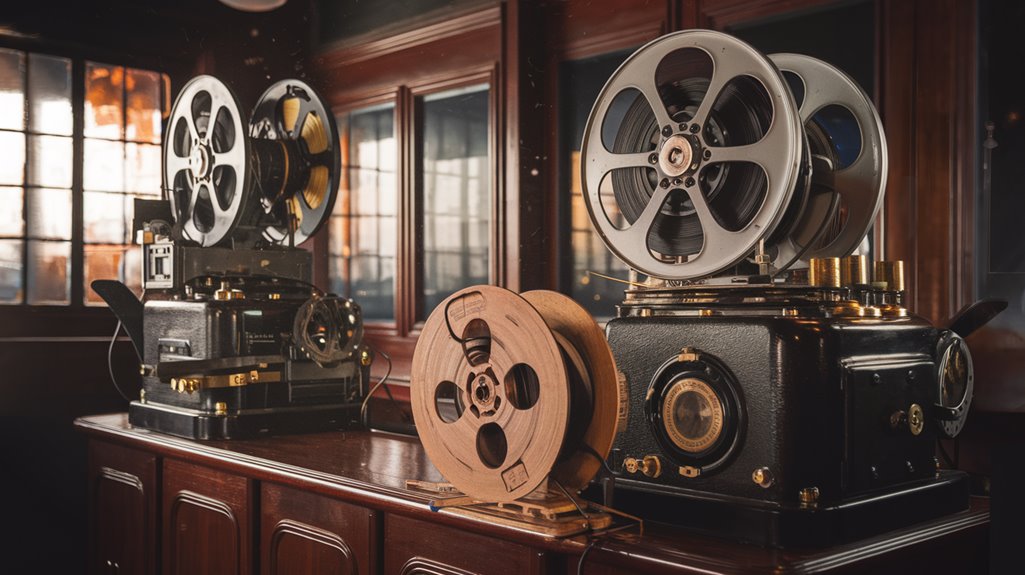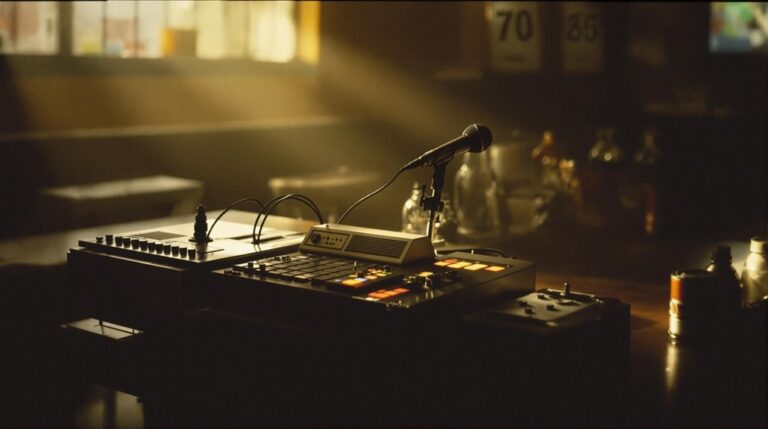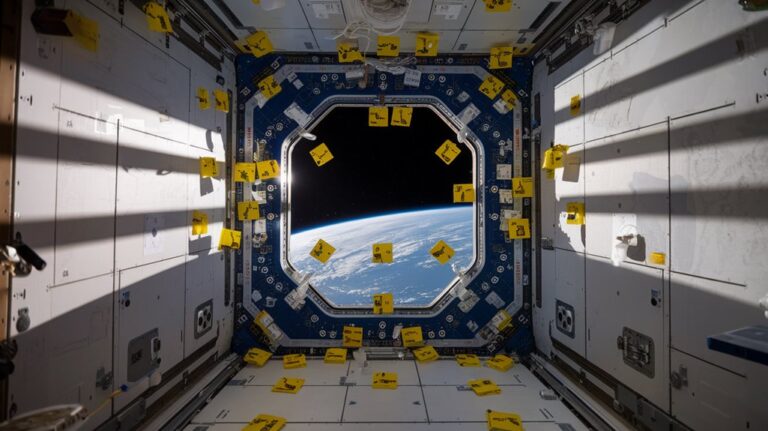Movie Previews Are Called “Trailers” Because They Originally Trailed the Movie
You've probably noticed that calling movie previews "trailers" doesn't make much sense, since they come before the film. Yet this seemingly backward term has stuck around for over a century, offering a fascinating glimpse into cinema's early days. The story behind this linguistic quirk reveals how movie marketing has evolved and why certain terms persist long after their original meaning becomes obsolete. Let's explore the surprising history of how these promotional clips got their misleading name.
The Birth of Movie Trailers: From End Credits to Opening Acts
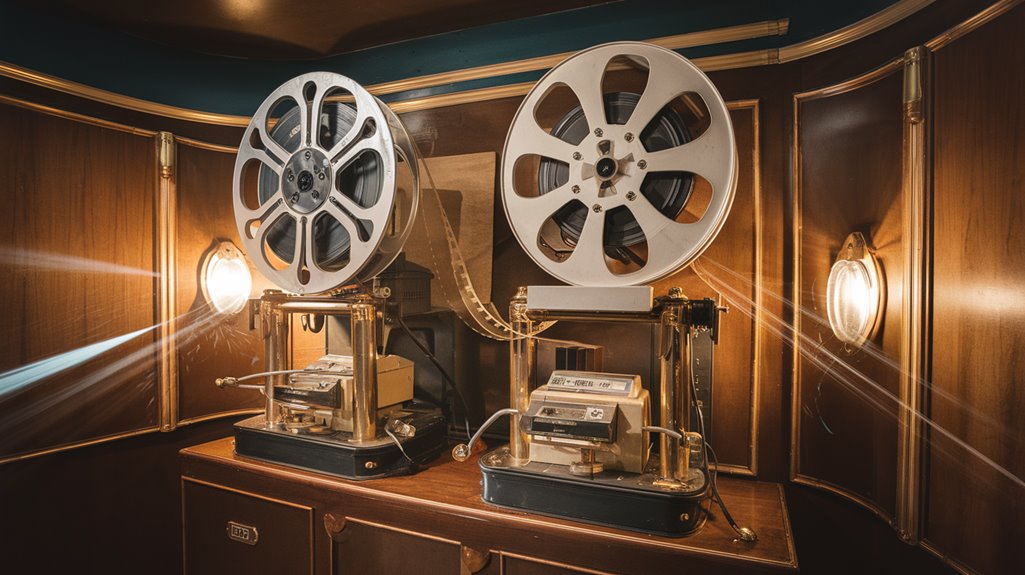
Although movie trailers are now an essential part of film marketing, they began as a simple experiment in 1913 when publicist Nils Granlund created a short promotional clip for "The Pleasure Seekers."
This innovative approach caught the attention of Marcus Loew, who'd later found MGM Studios, and he quickly adopted the practice for his productions.
The trailer origins were humble, but they sparked a marketing revolution that would forever change how films were promoted. Trailers earned their name because they originally ran after the main feature.
You'll find it interesting that major stars like Charlie Chaplin soon had their own trailers, demonstrating the format's growing significance. The introduction of sound and voiceovers dramatically transformed how trailers captivated audiences.
Within just a few years, trailers became a vital tool for attracting audiences, leading to the establishment of the National Screen Service in 1919, which would dominate trailer production for the next four decades.
How Movie Trailers Got Their Misleading Name
While modern moviegoers watch trailers before the main feature, these promotional clips originally appeared after the film ended, which explains their peculiar name.
Similar to how Wikipedia allows anyone to contribute, movie theaters in the early days welcomed all audiences to stay for these promotional previews. The trailer terminology has persisted despite historical misconceptions about its origin, creating confusion for those unfamiliar with cinema's early days. Early movie audiences experienced these advertisements as they trailed the feature, making the term quite literal at the time.
You can thank Nils Granlund, a pioneering publicist, for introducing this revolutionary marketing tool that would reshape the movie industry forever.
- You'd be surprised to learn that audiences once stayed after the credits to catch glimpses of upcoming attractions.
- You might feel puzzled about why we still use "trailer" when these previews now lead the show.
- You can appreciate how this simple innovation transformed film marketing.
- You'll understand why some people prefer the more logical term "preview" instead.
The Evolution of Movie Preview Placement
Since movie theaters first showed trailers in 1913, these promotional clips have undergone a fascinating journey in their placement.
Initially, you'd see trailers after the main feature, as audiences would socialize in theaters after films ended. During this early period, National Screen Service became the primary producer of movie trailers starting in 1920. The name "trailer" originated because these previews would follow feature films. This unique aspect of trailer history changed dramatically during the Great Depression.
As more affordable theaters opened and economic pressures mounted, audience engagement patterns shifted. People no longer stayed after movies, prompting theaters to move trailers to the start of showings in the late 1920s and early 1930s.
This shift proved successful, especially as innovative filmmakers like Hitchcock and Kubrick began creating their own trailers in the 1960s.
Today, while most theaters show previews before the main feature, you'll occasionally find some, like Marvel movies, including post-credit trailers.
The National Screen Service's Impact on Early Trailers
When three New York advertising men founded the National Screen Service (NSS) in 1919, they couldn't have predicted their company would revolutionize movie promotion for decades to come.
Starting with bootlegged footage, NSS quickly secured exclusive deals with major studios, establishing unprecedented market dominance in trailer production and distribution. They celebrated a milestone in 1961 with their 25th anniversary celebration.
You might be amazed to know that by 1953, NSS was:
- Reaching 25 million weekly viewers across America
- Distributing 9,400 trailers every week
- Storing nearly half a million feet of trailer footage
- Setting industry standards that would last 40 years
The company's innovations transformed movie advertising, from pioneering sound trailers in 1928 to developing the quick-cut editing style that's still influential today.
Their monopoly on trailer production shaped how audiences experienced film previews until the late 1990s.
Modern Movie Previews: A Century of Transformation
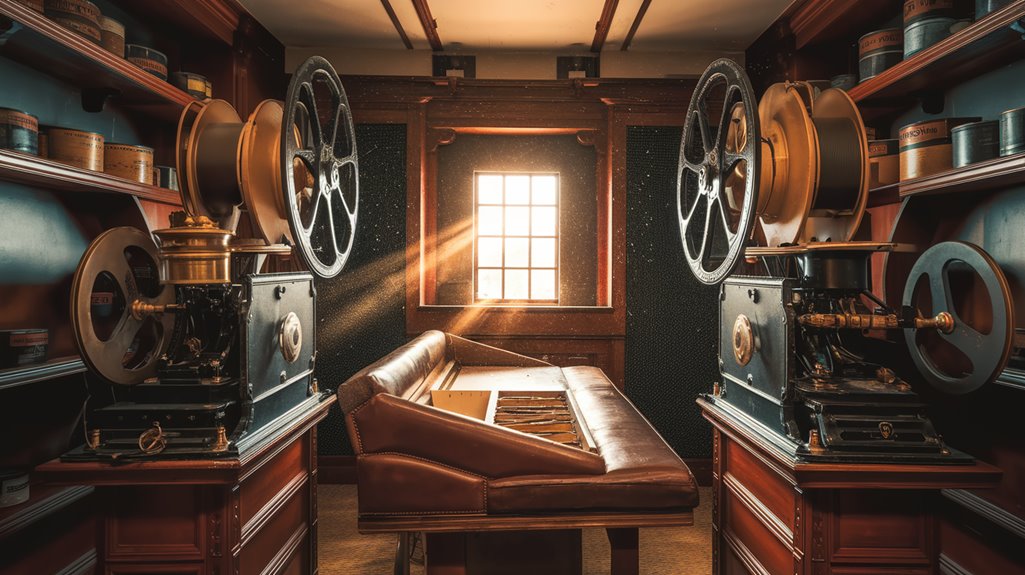
Throughout the past century, movie trailers have evolved from simple linear narratives into sophisticated marketing tools that captivate audiences through complex storytelling techniques.
Modern theater trailers can run up to two-and-a-half minutes in length, carefully structured to maintain audience engagement. You'll notice how modern trailers employ non linear storytelling, intercutting scenes to build suspense and keep you guessing about the plot. Modern trailers require brutal efficiency in selecting moments that deliver maximum impact in minimal time. This transformation has been driven by technological advances, particularly digital technology, which has revolutionized both production and distribution methods.
Today's trailers start fast and end with impact, weaving together key moments that advance the story while stirring emotions.
They're crafted specifically for different platforms, from television to social media, with varying lengths and content. The rise of AI and automatic systems has further transformed trailer creation, offering new possibilities for personalized advertising and narrative summarization that resonates with modern audiences.

